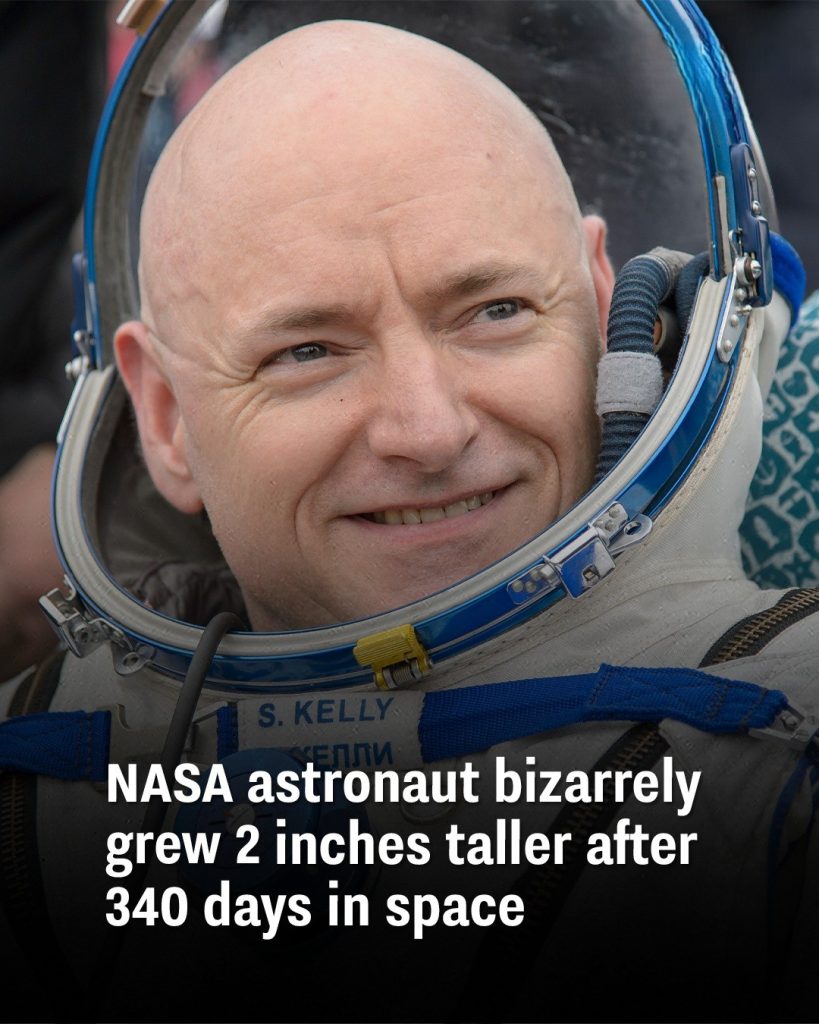NASA Astronaut Scott Kelly’s Mysterious Growth in Space: The Science Behind His 2-Inch Height Increase
For centuries, space has fascinated humankind with its vastness and mysteries. But as technology has advanced, we’ve not only explored space but also begun to understand its effects on the human body. One of the most intriguing phenomena witnessed in space is the temporary height increase in astronauts. This was notably observed in NASA astronaut Scott Kelly, who bizarrely grew two inches taller after spending 340 days aboard the International Space Station (ISS).
How Did Scott Kelly Grow Taller in Space?
The human body is highly adaptable. On Earth, gravity constantly compresses the spine, keeping us at our usual height. However, in microgravity environments such as the ISS, this compression is significantly reduced, allowing the spinal discs to expand. This elongation is what caused Kelly to grow taller.
According to NASA scientists, the spine has 24 vertebrae separated by intervertebral discs, which act as cushions between the bones. Without the downward pull of gravity, these discs expand, leading to an increase in overall height. While astronauts can grow up to two inches taller in space, this change is temporary, and their height returns to normal once they’re back on Earth.
Kelly’s Year in Space: A Groundbreaking Mission
Scott Kelly’s 340-day mission in space, from March 2015 to March 2016, was part of NASA’s Twin Study, which compared his body changes to those of his identical twin brother, Mark Kelly, who remained on Earth. This study was crucial in understanding the effects of long-duration spaceflight on the human body—an essential area of research for future deep-space missions, including planned trips to Mars.
During his time in space, Kelly experienced several physiological changes beyond his increased height, including:
-
Muscle Loss and Bone Density Reduction: The absence of gravity weakens muscles and bones, requiring astronauts to perform rigorous daily exercises to minimize deterioration.
-
Vision Changes: Spaceflight-induced fluid shifts can affect eye shape, leading to vision problems. Kelly reported such issues during and after his mission.
-
Immune System Alterations: His immune system reacted differently in space, showing increased inflammation.
-
Genetic and Epigenetic Changes: While many of these changes reversed upon his return to Earth, some persisted, leading scientists to question the long-term impact of space travel on DNA.
What This Means for Future Space Exploration
Scott Kelly’s height increase might seem like an interesting anomaly, but it carries significant implications for future space missions. As NASA and private space companies like SpaceX and Blue Origin plan for extended human presence on the Moon and Mars, understanding the body’s response to prolonged microgravity is essential.
One major concern is the health of astronauts returning to Earth after extended periods in space. The rapid spinal decompression upon reentry can cause severe discomfort and even temporary mobility issues. Additionally, the loss of bone density and muscle mass poses challenges for long-term human survival in low-gravity environments.
Can We Prevent These Changes?
NASA continues to research ways to mitigate the effects of microgravity on the human body. Some potential solutions include:
-
Artificial Gravity: Rotating spacecraft or sections of a space station could generate artificial gravity, mimicking conditions on Earth.
-
Advanced Exercise Regimens: Astronauts currently spend about two hours per day exercising in space. New techniques, such as electrical muscle stimulation, could help maintain muscle and bone health more effectively.
-
Pharmaceutical Interventions: Drugs designed to slow bone loss or promote muscle growth might help counteract microgravity’s effects.
Conclusion: Spaceflight and the Future of Human Biology
Scott Kelly’s two-inch height increase is more than just an amusing fact—it’s a testament to the incredible adaptability of the human body and a reminder of the challenges that come with space travel. As humans push further into space, from lunar bases to potential Martian colonies, our understanding of how space affects our bodies will be critical in ensuring the safety and well-being of future astronauts.
While Kelly has since returned to his original height on Earth, his mission provided invaluable insights into human spaceflight. Thanks to studies like his, we are one step closer to answering the big question: What will it truly take for humanity to thrive beyond our home planet?


